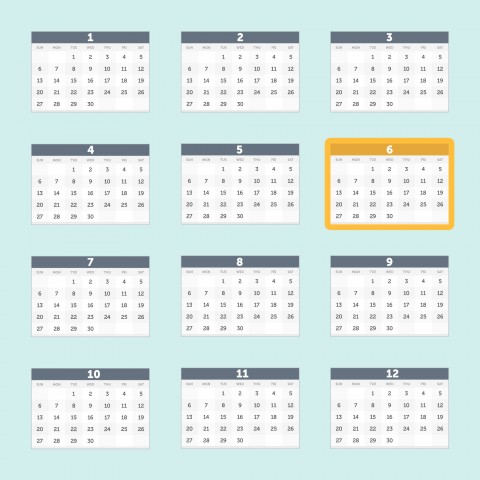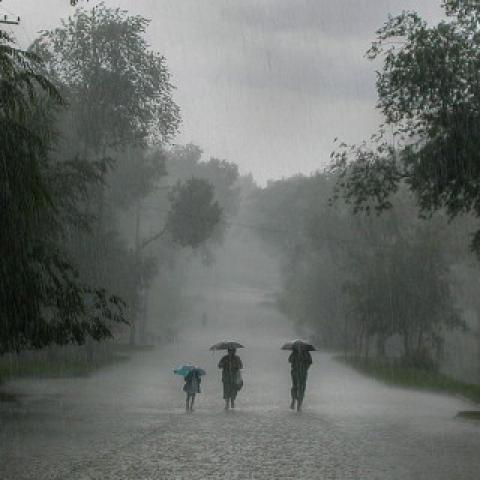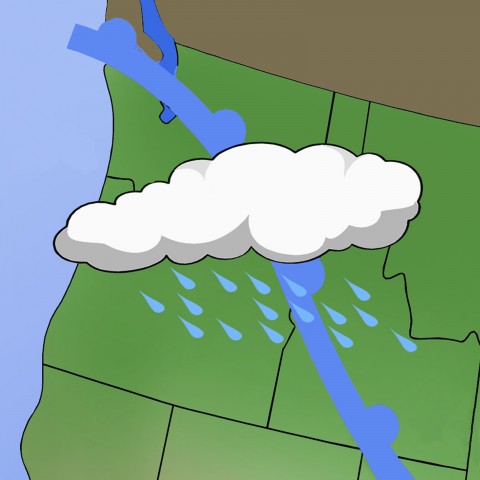 Does rainy and overcast weather make you as depressed as it makes me? The rainy weather doesn’t do any favors for my morale, and its effect grows stronger with each day it continues raining…
Does rainy and overcast weather make you as depressed as it makes me? The rainy weather doesn’t do any favors for my morale, and its effect grows stronger with each day it continues raining…
In South Korea, the rainy season is a several-week period during which the country experiences heavy rains and overall gloomy weather. In this article, you’ll learn all about the Korean rainy season, how to prepare for a trip to South Korea during this time, and some useful vocabulary.
Let’s get started!

1. What is the Rainy Season?
 In South Korea, the rainy season is called 장마철 (jangmacheol), and it’s a several-week period during which the country experiences bouts of 폭우 (pogu), or “heavy rain.” This is caused by a 장마전선 (jangmajeonseon), or “rain front,” that develops when the cooler air of the north mixes with the warmer southern air. The Korean rainy season is a result of this front moving northward from the island of Okinawa.
In South Korea, the rainy season is called 장마철 (jangmacheol), and it’s a several-week period during which the country experiences bouts of 폭우 (pogu), or “heavy rain.” This is caused by a 장마전선 (jangmajeonseon), or “rain front,” that develops when the cooler air of the north mixes with the warmer southern air. The Korean rainy season is a result of this front moving northward from the island of Okinawa.
In Korea, monsoon season means lots of 습도 (seupddo), or “humidity,” and this is known to cause food spoilage and damage to personal belongings such as clothing. In addition, one must be careful of a possible 홍수 (hongsu), or “flood,” or 산사태 (sansatae), or “landslide,” as well as typhoons which are relatively common during this time period (though they’re not as serious as they tend to be in other Asian countries).
- → Do you want some more weather-related vocabulary? See our vocabulary list on the Top 15 Weather Conditions!
2. When is Rainy Season?
 Generally, the rainy season in Korea lasts from June to September, with late June and the month of July being the rainiest time.
Generally, the rainy season in Korea lasts from June to September, with late June and the month of July being the rainiest time. 3. Visiting South Korea During the Rainy Season
 For many, the rainy season in Korea is a time to stay indoors as much as possible, and a trip to South Korea may not be for everyone during this time. But if you do plan on visiting South Korea, the rainy season doesn’t need to spoil your fun!
For many, the rainy season in Korea is a time to stay indoors as much as possible, and a trip to South Korea may not be for everyone during this time. But if you do plan on visiting South Korea, the rainy season doesn’t need to spoil your fun!
How to Prepare
Do your research. Before you plan your trip, it’s good to research when the rainy season is expected to be that year!Buy an umbrella. Trust us; you’ll wish you had one if a heavy rain catches you by surprise.
Pack clothing for any weather situation. The Korean rainy season can be a bit unpredictable, and there may be several days where it doesn’t rain. Bringing different kinds of clothing with you and dressing in layers is a great idea to keep you comfortable no matter the weather.
Things to Do
In South Korea, monsoon season is the perfect opportunity to explore a variety of indoor activities—of which the country has myriads! Depending on your interests, you may enjoy going to the Myeongdong NANTA Theater, the National Museum of Korea, or the Seoul Arts Center, all located in Seoul.Depending on the 강수량 (gangsuryang), or “amount of rainfall,” other activities done during the rainy season include hiking, walks through gardens or parks, and spending some cash at outdoor markets.
Of course, if you do visit South Korea during the rainy season, it will be the perfect opportunity to taste and explore a variety of seasonal Korean foods. These often include cool, fresh ingredients, meant to keep you comfortable during the gloomy rainy season.
- → See our blog posts about the Top 10 Best Korean Markets in Seoul and the Top 10 Must-Try Korean Street Foods in Seoul to get some ideas!
4. The Floods of 2014
 In 2014, South Korea experienced a series of floods that caused severe damage and an estimated ten deaths. These floods occurred in mid-August, near Honam and Yeongnam.
In 2014, South Korea experienced a series of floods that caused severe damage and an estimated ten deaths. These floods occurred in mid-August, near Honam and Yeongnam.
For several days, South Korea dealt with landslides, house flooding, and even fatal accidents. It’s important to always be watchful and cautious during the rainy season in Korea!
5. Must-Know Rainy Season Vocabulary
 Ready to review some of the vocabulary words and phrases from this article? Here’s a quick list!
Ready to review some of the vocabulary words and phrases from this article? Here’s a quick list!
- 비 (bi) — “rain” [n.]
- 칠월 (chirwol) — “July” [n.]
- 유월 (yuwol) — “June” [n.]
- 여름 (yeoreum) — “summer” [n.]
- 장마철 (jangmacheol) — “rainy season” [n.]
- 폭우 (pogu) — “heavy rain” [n.]
- 홍수 (hongsu) — “flood” [n.]
- 습도 (seupddo) — “humidity” [n.]
- 습한 (seupan) — “humid” [adj.]
- 산사태 (sansatae) — “landslide” [n.]
- 장마전선 (jangmajeonseon) — “rain front” [n.]
- 장맛비 (jangmatbi) — “rain in the rainy season” [n.]
- 호우 (hou) — “heavy rain” [n.]
- 호우주의보 (houjuuibo) — “heavy rain watch” [n.]
- 강수량 (gangsuryang) — “amount of rainfall” [n.]
If you want to hear the pronunciation of each word and phrase, be sure to head over to our Korean Rainy Season vocabulary list.
Final Thoughts
The Korean rainy season may be gloomy, but it has some shining qualities, too! We hope you learned something new today, and that you have a better idea of what to expect during your rainy season visit.Is there a rainy season in your country, too? How do you spend rainy days? Let us know in the comments!
If you’re interested in learning more about South Korean culture and the Korean language, KoreanClass101.com has plenty of free resources for you, straight from our blog:
- Hyeon Chung Il: Memorial Day in Korea
- Gwangbokjeol: Celebrating Independence Day in Korea
- Best Korean TV Shows to Learn Korean
- 10 Most Highly Recommended South Korean Movies
- 10 Untranslatable Korean Words You Need to Know
This only scratches the surface of everything KoreanClass101.com has to offer the aspiring Korean-learner. To make the most of your time with us, create your free lifetime account today. Or, to gain access to exclusive content and lessons, upgrade to our Premium or Premium PLUS plans.
Our goal is to make your Korean learning as fun and effective as possible, so we hope to see you around!
Stay safe, and happy learning!










